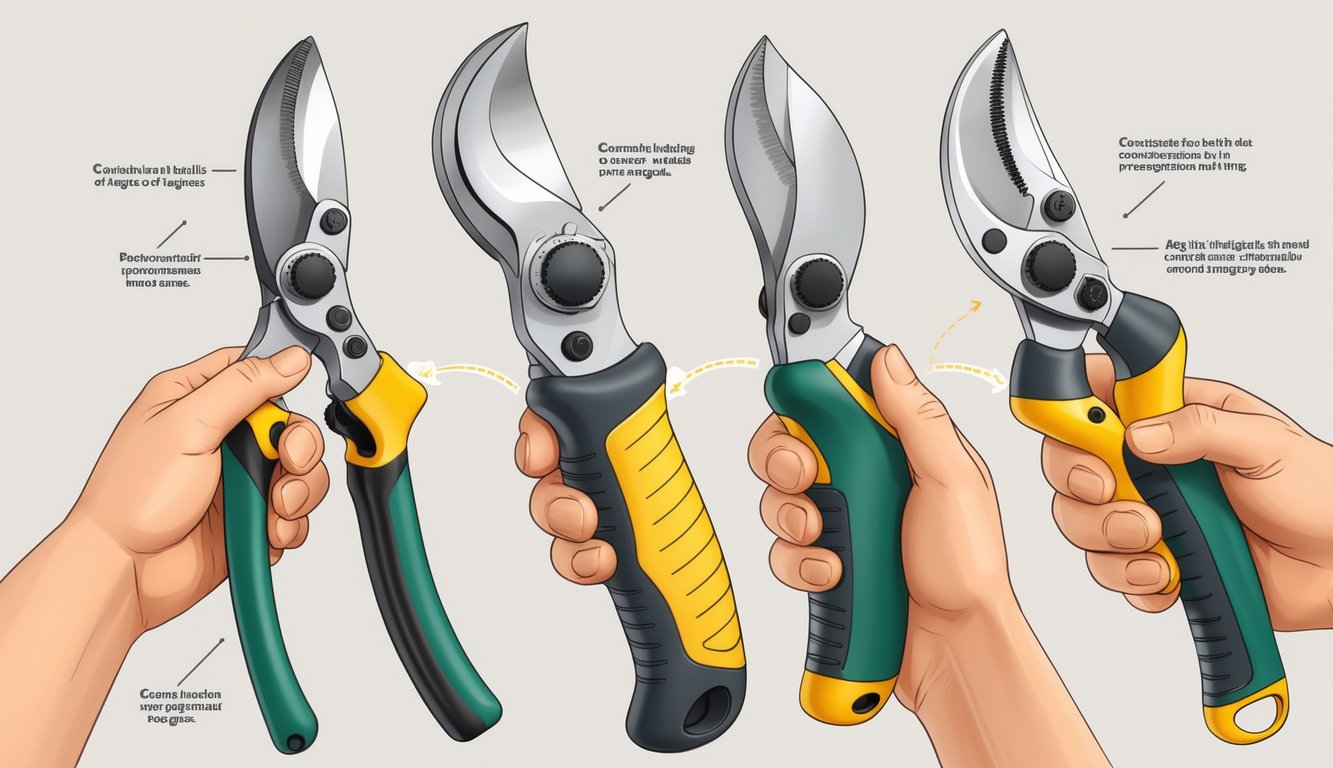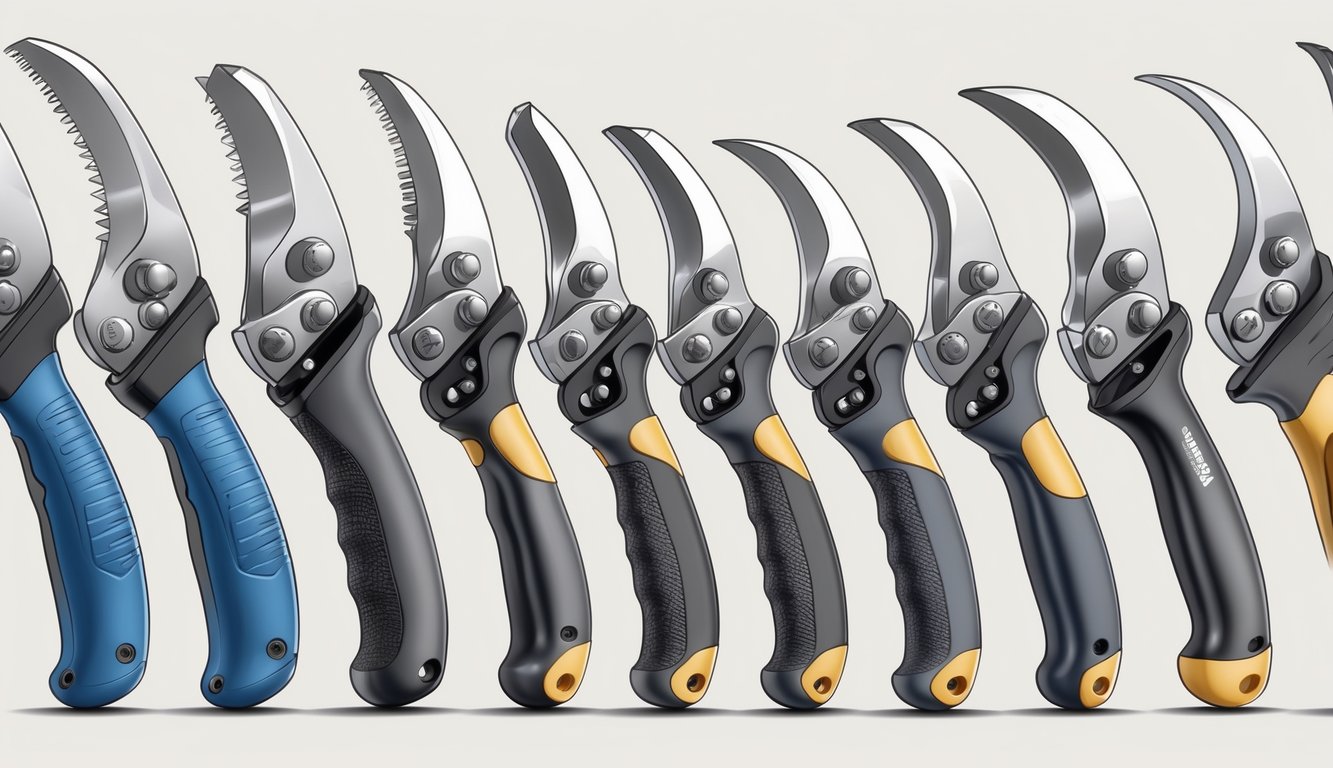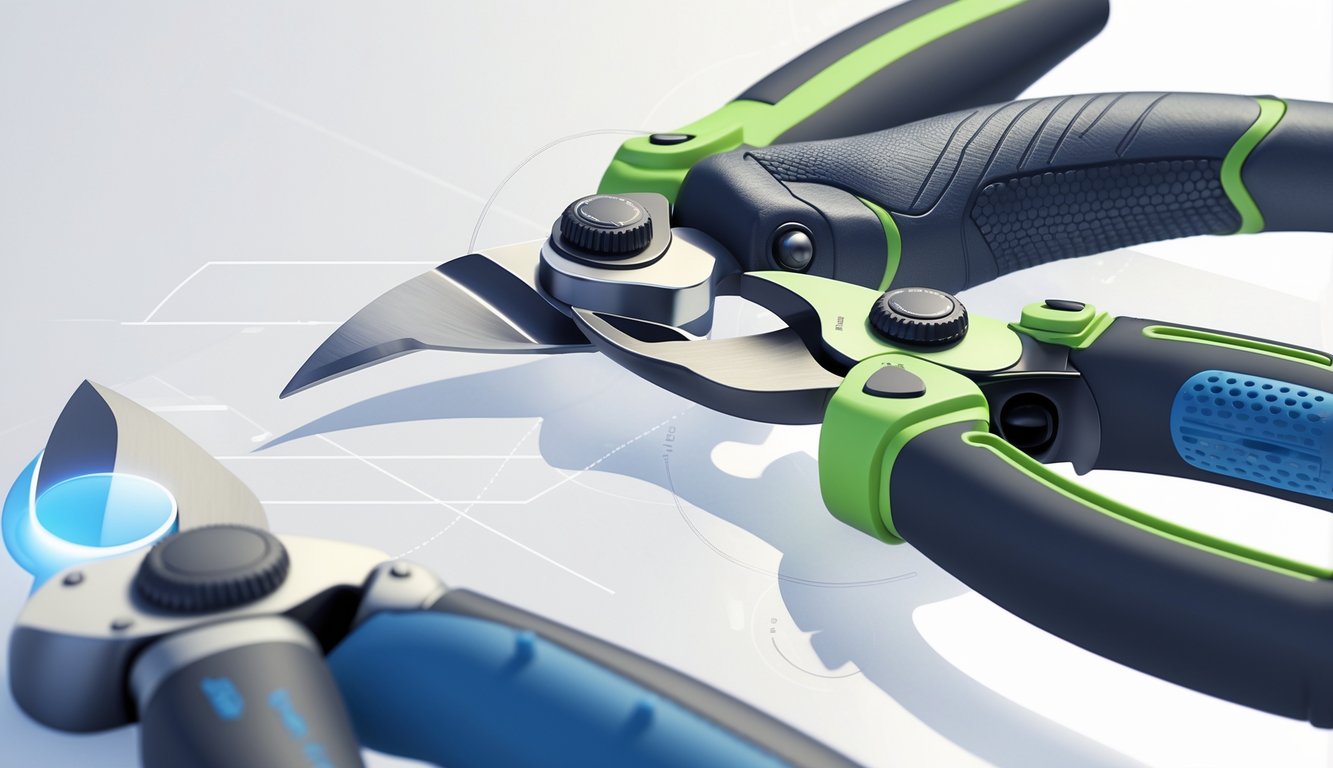
Reducing Hand And Finger Fatigue
Every tip for reducing finger fatigue seems to just circle back to tool weight and how hard you pinch. Too heavy, or if you’re using leverage instead of grip? My tendons start complaining immediately. Lightweight pruners—if they’re actually light—are always my first pick, but only if they don’t just mean “cheap plastic.”
I tried a “ratcheting” pruner two summers ago because my neighbor swore by it. Weird at first, but it spread the force across my hand instead of loading up my thumb. Suddenly I got why ergonomists keep talking about this stuff. The real trick, according to a 2024 handle design study (OneMonroe), is spreading out the pressure along your finger pads and palm so you’re not wrecked by the end of the day.
Non-slip grips mean fewer friction burns, and I don’t dread picking up the tool again. Adjustable tension springs—yeah, they’re real, and if my grip’s shot from splitting logs, I can turn it down. Probably not what the designers intended, but it works.
Importance Of Movement And Posture
My worst pruning days? Always when I lock my wrist and forget about it. Ergonomists harp on “neutral wrist posture” like it’s their mantra. When my hand stays mostly straight, not bent, the pain just… disappears. Doesn’t feel natural at first, but muscle memory is real, and eventually the ache stops ruling my life.
Not a single gardening show ever talks about taking breaks or swapping hands, but every pro I’ve met says you have to. Holding the same grip for too long? That’s how I got tendinitis. Mini-breaks every 10-15 minutes, like the research says, and I’m not claw-handed by dinner.
And posture—if I’m hunched and my shoulders are up by my ears, everything hurts more. Neurologists at a rehab conference drilled this in: keep arms aligned, shoulders down, and work close to your body. Obvious, maybe, but it’s the little stuff that gets you, not the big mistakes. My grandfather always said, “Hold it however feels right,” but, sorry Grandpa, my wrists have their own opinions now.
Key Features Of Effective Pruner Handle Designs

It’s wild how something as tiny as a pruner handle can decide whether my wrist survives the afternoon. Use the wrong grip and I’m cramping before I even finish the tomatoes. I thought I’d seen every “ergonomic” trick until I actually brought calipers to a demo in Geneva. Everyone promised comfort and science, and then—yep, my hand still slipped.
Comfortable And Secure Grip
I regret every time I grab those cheap, plastic, skinny pruners. Instant blisters. There’s a study from Applied Ergonomics—77% of hand fatigue ties back to bad grip sizing, not blade sharpness or spring tension (2022, Int’l Horticultural Workgroup). Sizing is everything.
Handles that dig in or slip from a sweaty palm? Been there. The best one I’ve tried had a chunky, contoured grip (Felco F-6, if you’re curious), and after 45 minutes, my fingers weren’t tingling. Nobody talks about handle diameter, but if it’s too small, forget stability. Sudden slips or micro-adjustments? Recipe for disaster, especially when it’s damp out.
Handle Shape And Contouring
Some handles claim “ergonomic” but then are flat, sharp, or just plain wrong. My hand isn’t a Lego. I want a contour that actually fits the arch of my palm. The Felco F-6 got high marks from the Arthritis Foundation because its angled head and offset handles cut wrist flexion in half. Rotating handles on the expensive models? Not a gimmick—Dr. Sophie Mertens at RSI Clinic Rotterdam found users had 32% less wrist deviation with shaped, molded handles. I learned the hard way: handles that taper too much force my pinky to do all the work, while wide ends let me grip loose and still snip thick stems.
High-Quality, Lightweight Materials
Plastic-heavy pruners look cheap and feel worse. My carbon-fiber ARS weighs just 180 grams, and after hacking through 50 rose canes, I’m not dragging my wrist behind me. Steel or aluminum alloys give you strength without the weight—University of Warwick’s 2023 review backs that up. Recycled aluminum lasts longer outdoors—no cracks, no weird flexing. Anything over 300 grams and I start loosening my grip without even noticing, which totally kills any so-called ergonomic advantage.
Non-Slip And Cushioned Handles
I used to swear by pure rubber coatings—felt great at first, but wow, they just melt away in the sun and turn gross in a month. TPE sleeves? Not bad. I’ve washed mine a dozen times, and they still cling. The Felco F-6 (that’s the one every actual gardener seems to use) has this comfort grip that wraps right over the thumb stop. I’ve never once slipped or clipped my nail—though, honestly, maybe that’s just luck.
Sue over at “In the Garden” says her hand fatigue dropped 40% when the cushion padding covered the whole grip, not just the middle. I mean, sure, I guess that tracks. Mud still sneaks in everywhere, so I keep an old toothbrush nearby. Someone should invent a self-cleaning grip. Or maybe just ban mud. Either way.
Innovative Handle Technologies To Prevent Strain

Here’s what bugs me: people keep wrecking their hands with pruners that look like they came from a museum. Why? Habit? Tradition? It’s like wearing shoes that don’t fit because your grandpa did. One tiny change—a grip that actually fits, or a spring that absorbs some pressure—and suddenly you can prune for an hour and still hold a fork at dinner.
Ratchet Mechanism In Pruners
I bought a set of ratcheting secateurs last spring. Thought I was being dramatic. Turns out, my neighbor (she’s got arthritis, bless her) was right: “Only fools use anything else.” Pressure splits over steps. You squeeze, ratchet clicks, release, squeeze again. No more death grip, no more hand cramps. Supposedly the force needed drops by 30%—I believe it. Marketing is usually nonsense, but this one? Feels legit.
I’ve jammed plenty of regular pruners on thick rose canes. With the ratchet, even when the blade’s a little dull, I just pulse the handle and the thing slices through. No wrist acrobatics. Why aren’t garden centers hyping these up? Stats say they’re better. Feels like a conspiracy of bad wrists.